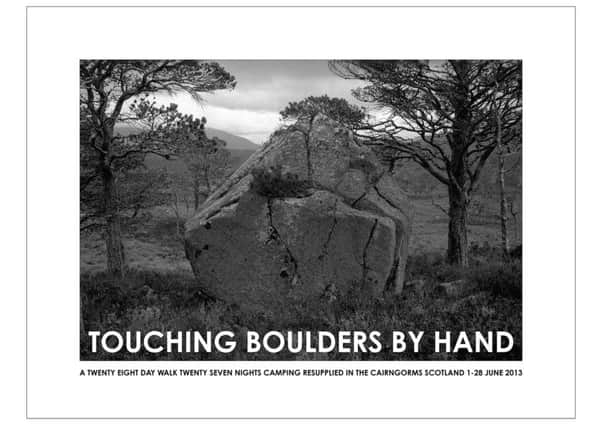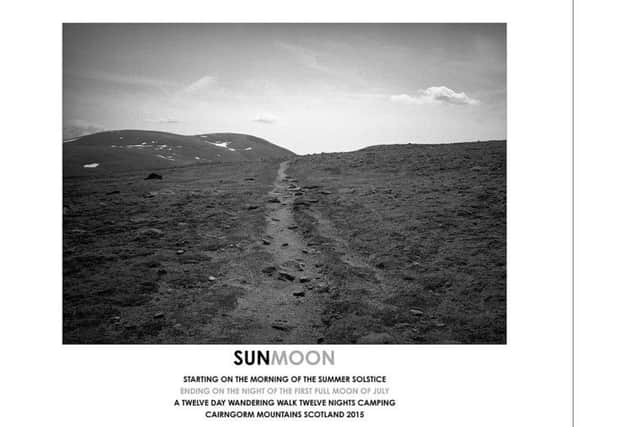Hamish Fulton, the 'walking artist' who takes only photographs and leaves only footprints


To begin to answer that question, a little background on the artist is required. Born in London to Scottish parents in 1946, Fulton studied at Hammersmith College of Art, St Martins School of Art and the Royal College of Art. His contemporaries in these early days included Richard Long, although he has always sought to avoid being labelled a “land artist”, pointing out that he does not attempt to “remodel nature” or to “introduce objects and materials from nature into the international art market”. His modus operandi is summed up by the old hippy adage “take only photographs, leave only footprints.”
In 1973, he made what he has described as a “final” commitment, namely “to make art resulting only from the experience of particular walks”, and in the subsequent decades he has walked thousands of miles over five continents and 25 countries, recording his experiences in photographs and text.
Advertisement
Hide AdAdvertisement
Hide AdThe word “experience” is the key one here: Fulton’s works may seem simple, usually consisting of a single image and a few carefully chosen words, but just as the concrete poems of Ian Hamilton Finlay, although ostensibly straightforward, are often distillations of complex philosophical ideas, so Fulton’s works are distillations of complex experiences: he’s not simply trying to show you what a certain place looks like; he’s trying to make you feel the things he felt when he was there. He always camps on his walks, and to reach for a clumsy, camping-inspired analogy, to spend a few minutes considering one of Fulton’s works is like adding water to a freeze-dried ration pack; be patient and eventually you will end up with something that, while it might not be quite as good as the original dish, is at least a decent approximation.


The most visceral example of this in the Fine Art Society show is Facing Cairn Toul, 1986- 2013, 2014- 2016. A physically imposing black-and-white panorama nearly a metre-and-a-half wide, it shows the summits of the Cairngorm massif in early summer, still flecked with patches of snow, spreading apparently uninterrupted to the horizon. The text at the bottom of the image records some of the various walks the artist has made here over the years, from “A seven day circular walk at the time of the summer solstice full moon seven nights camping Cairngorms Scotland 1986” to “A twenty eight day walk twenty seven nights camping resupplied in the Cairngorms 1-18 June 2013.” Nowhere does it say on which of these various expeditions the picture was taken, and I think that’s at least part of the point: the Cairngorms are always there, the artist seems to be saying, and, while they might look different on different walks or at different times of year, fundamentally they are always the same (or, at least, eroding so mind-bendingly slowly that they might as well be). The experience the artist is sharing, then, is the sense of looking out over a familiar, awe-inspiring view, remembering all the other times he’s been here, and realising that, in geological terms, the hundreds of hours he’s spent wandering these hills over many decades is just the blink of an eye. The other ten works in this show also speak volumes – you have 17 more days to hear what they have to say. n
*WALKing is a se7en letter word is at the Fine Art Society, Edinburgh, until 20 May.